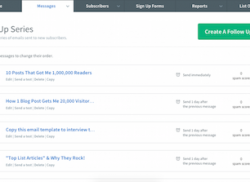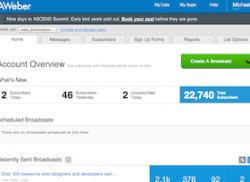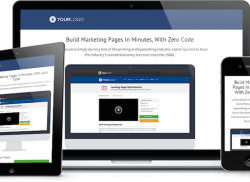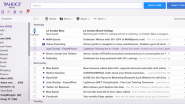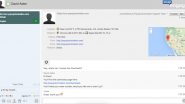Five Biggest Media Coverage Mistakes Of Entrepreneurs
We all learn by making mistakes, but when it comes to PR, making simple mistakes means you can miss out on sharing what your business has to offer to the world.
Here’s our list of the five biggest mistakes entrepreneurs make when looking to get media coverage for their company… and how you can avoid them like a pro.
Contents
Five Biggest Media Coverage Mistakes Of Entrepreneurs
Mistake #1: Having No Idea What To Say

It’s important to remember that news outlets are businesses too; businesses that trade in valuable and important information: News.
In that sense, PR is largely about convincing writers and editors that the information you want to give them is information their audience will find interesting and important.
The benchmark for news should be,
“Why would this piece of information matter to anyone not already a customer?”
If there’s no ready answer to that question, you may have something to say, but it’s not newsworthy.
Media coverage doesn’t come down to who you happen to know. It’s achieved, overwhelmingly, through concentrated, well-planned campaigns to attract attention.
As a starting place, think about,
“What do I have to share about my business that is interesting?”
Here are some examples of announcements that you can use:
- Launches – you’re starting your business or releasing a new product.
- Fundraising – you’ve just raised $10,000 on kickstarter.
- Milestones – your company turns 5!, surpasses 10,000 users, gains 50,000 followers on Twitter, etc.
- Acquisitions – your company acquires, or is acquired by, another company.
- Joining a cool club or receiving an award.
Don’t forget that social media is still media and here are 10 reasons why you suck at it.
Mistake #2: Being Shy
Most of us understand that if you send your pitch to 200 journalists who have been carefully selected by geography, news outlet and general area of interest, you’re much more likely to get press coverage than not.
But telling people about your business doesn’t stop there. You can also:
- Contact journalists on Twitter or LinkedIn
- Send your pitch through to the “info@,” “tips@” and other general tip lines too. For example, at one time, major tech news site VentureBeat got half its pitches via the “tips” line.
- Go to events like trade shows, where you might get to meet journalists in person.
Also don’t be afraid to politely follow-up a couple of days later with the same person. Sometimes journalists miss stories that they’d otherwise like because they get upwards of 200 emails a day.
Mistake #3: Being Rude
Good media coverage is a partnership made between two businesses, not an entitlement gifted to businesses or PR firms by some separate entity called “the media.”
In all your interactions with journalists, a little politeness goes a long way. When you consider that journalists receive dozens of pitches every day, you’ve got to stand out from the crowd… Use phrases like,
“If you’re too busy to reply, please don’t worry about it.”
This seems like common sense, but the sad reality is that you can stand apart from the crowd by being very polite and going out of your way to make things as easy as possible for the journalist.
There’s nothing that will turn a journalist off your story faster than starting to argue why a story is “actually news.” If you haven’t managed to convince them already, no amount of phone calls or emails will make them “see reason.”
Mistake #4: Not Putting Time Into Your Pitch Email
When contacting reporters, remember that you’re not speaking to a computer – there’s a person behind the email, which is easy to forget when you are sending out dozens of emails at a time.
You are going to get the best results when you address a reporter as you would a friend, and emails that appear spammy are ignored.
As much as possible, emails should be personalized, cordial, and professional. Reporters want to write about serious entrepreneurs with promising futures.
Generic emails like the following off-put journalists and relegate your post to the trash:
“To whom it may concern, we thought this might be of interest to you.”
The formality and lack of personalization is off-putting. An email with the following beginning is much more likely to resonate:
“Hi Joe, Andrew here, I saw that we have a mutual acquaintance and she thought this story might interest you.”
The following email is a template to use when contacting journalists. The information will change depending on the announcement of the company. If you decide to use a similar format, remember that this should be personalized as much as possible.
Hi “Individual’s Name”,
My name is “Your Name”. I founded a (Ex: Boston-based) tech startup called (Company Name) that’s launching today, and am emailing to see if you would be interested in writing an article about the launch.
“Company Name” was created to help people discover and promote live events with others. Our product, which is an iPhone app, is free for users on the iTunes App Store. I have below our Press release and I am happy to follow up with any information over email or by phone.
Thank you for your time and energy.
Cheers,
“Your Name”
Founder, “Company”
Mobile: “Your Phone Number”
Make sure your emails get read – here are 12 powerful tips to increase email open rate.
Mistake #5: Forgetting To Connect
Remember to always be respectful of a journalist’s time.
Under no circumstance is it a good idea to email a journalist with an open ended question that requires a long response.
If you don’t know the journalist personally, do not immediately ask to meet for coffee. Coffee takes more than 30 minutes and disrupts a person’s day.
The best way to connect with journalists is to show that you understand their time is valuable and that although you would like to meet, you do not want to be a burden.
Although most of this is common sense, these are mistakes made every day by smart, savvy business people. Now that you’ve seen five of the top mistakes you can make when pitching to journalists, you can avoid making them.
How do you get media coverage for your startups? Help empower fellow entrepreneurs in the comments below.
"Do Not Write Another Blog Post Until You Watch This Free Video..."

Watch this free video to learn...
- How I got over 10,000,000 people to visit my websites.
- The types of blog post that got me all that traffic.
- How to get someone else to do it for you!


